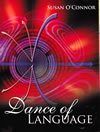Analytical Essays
 Writing about literature offers students an opportunity to express thoughts and ideas about the reading while giving the instructor
a way to assess their understanding of the literature and ability to communicate it articulately. The tools for responding to literature
do not necessarily come naturally or easily to students; they must be taught. Several chapters in
Dance of Language ask students to respond
in essay form to the literature introduced in the book. These techniques, however, work on a general level with any piece of literature.
Students with university aspirations will find an Advanced Placement format with clear organization following a thesis sentence that shows
how a concrete object reveals an abstract idea. For example, the knothole in the tree (concrete) at the corner of the Radley lot in
To Kill a Mockingbird serves as a symbol of rebirth (abstract)
for Boo Radley as he finds new life in his somewhat secret friendship with Jem and Scout Finch.
Writing about literature offers students an opportunity to express thoughts and ideas about the reading while giving the instructor
a way to assess their understanding of the literature and ability to communicate it articulately. The tools for responding to literature
do not necessarily come naturally or easily to students; they must be taught. Several chapters in
Dance of Language ask students to respond
in essay form to the literature introduced in the book. These techniques, however, work on a general level with any piece of literature.
Students with university aspirations will find an Advanced Placement format with clear organization following a thesis sentence that shows
how a concrete object reveals an abstract idea. For example, the knothole in the tree (concrete) at the corner of the Radley lot in
To Kill a Mockingbird serves as a symbol of rebirth (abstract)
for Boo Radley as he finds new life in his somewhat secret friendship with Jem and Scout Finch.
 The benefit of writing essays that analyze literature, using specific tools for clarity, fluency, and depth,
is the resulting act of engaging in higher level thinking skills. Students begin with knowledge about the literary elements
and advance to the application of a number of tools that will aid in analysis: symbolism, figurative language, antithesis, irony,
theme, even Freud’s ideas regarding id, ego, and superego and Jung’s shadow theory as well as a myriad of archetypal images.
All of this higher level thinking accompanies practice with basic writing skills—organization, diction, variety in sentence structure,
fluency, clarity, and mechanics, including in text citation using parenthetical reference to textual support.
As in all other areas of learning, practice is key. In Dance of Language students will find numerous opportunities
to practice these skills as they can easily produce several essays on literary topics each year.
The benefit of writing essays that analyze literature, using specific tools for clarity, fluency, and depth,
is the resulting act of engaging in higher level thinking skills. Students begin with knowledge about the literary elements
and advance to the application of a number of tools that will aid in analysis: symbolism, figurative language, antithesis, irony,
theme, even Freud’s ideas regarding id, ego, and superego and Jung’s shadow theory as well as a myriad of archetypal images.
All of this higher level thinking accompanies practice with basic writing skills—organization, diction, variety in sentence structure,
fluency, clarity, and mechanics, including in text citation using parenthetical reference to textual support.
As in all other areas of learning, practice is key. In Dance of Language students will find numerous opportunities
to practice these skills as they can easily produce several essays on literary topics each year.
